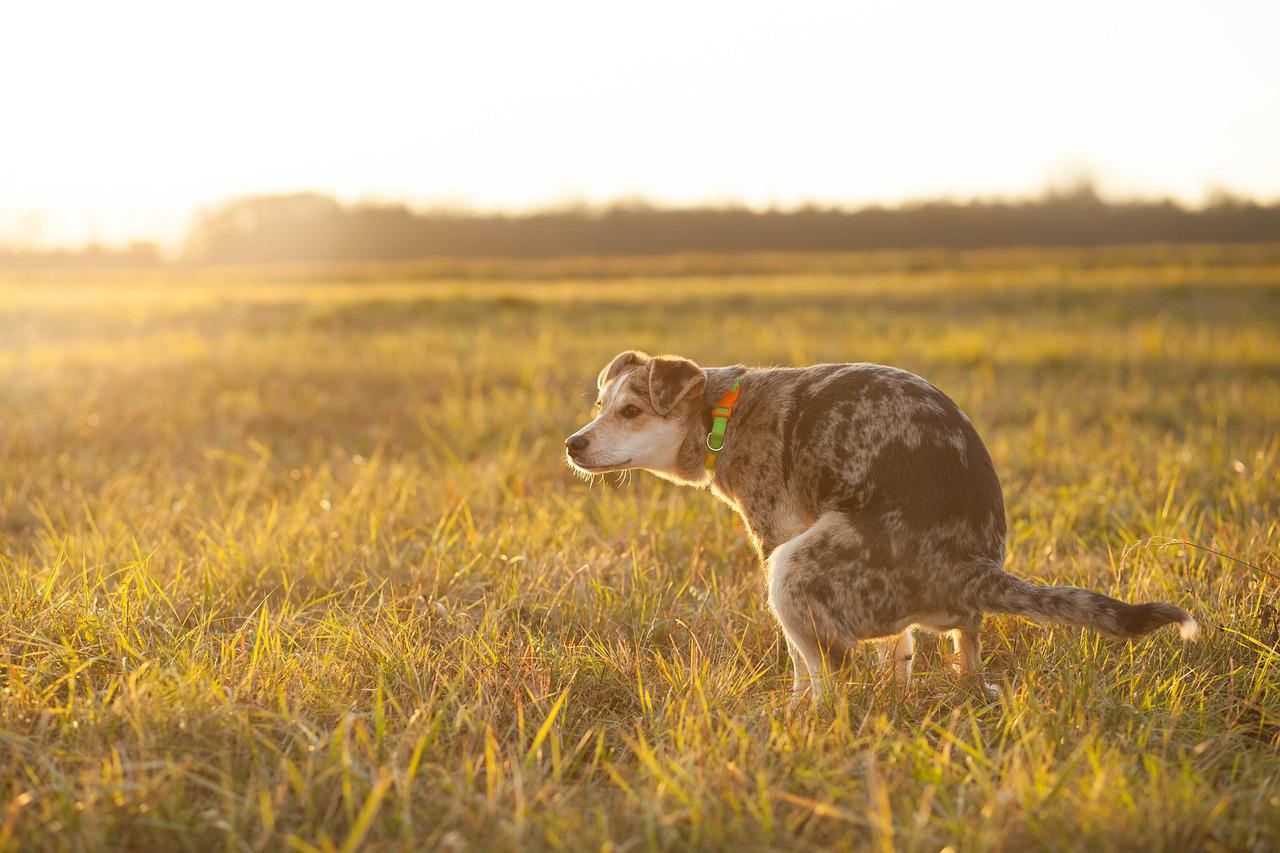Diarrhea is common in dogs. Every paw parent has dealt with it at some point in life, and many tend to dismiss it as no big deal. Diarrhea can be explained as loose feces that typically occur in large amounts or more frequently. Mostly it can be caused by minor intestinal distress when your Fido consumes something that does not settle well with the stomach. But, when do you know when dog diarrhea is an emergency?
When Is Dog Diarrhea An Emergency?
A dog’s diarrhea is an emergency when there are recurring bouts of diarrhea over a short period or if they look to be struggling to pass stools but are only passing little amounts of watery diarrhea. Also, if a dog is having diarrhea and is showing signs of lethargy and vomiting, you should consult your vet immediately.
If your dog is having diarrhea and is showing the signs below, you should visit the vet immediately;
- Diarrhea after vaccination
- Unusual drooling
- Lack of appetite
- Signs of dehydration (sunken and dry eyes, sticky gums, and dry nose)
- Weakness
What are the Different Types of Diarrhea in Dogs
Large-bowel and small-bowel diarrhea are the two main types of diarrhea in dogs.
1. Large-Bowel Diarrhea
Your dog may show these signs if he suffers from large-bowel diarrhea:
- higher frequency
- little amounts of poo
- straining while defecating
- stool with blood and mucus
It can be very frightening to find blood in your dog’s feces. While a small quantity of blood in the stool is natural, it is a symptom of colon inflammation, and you should call your veterinarian.
There are two main uses for the colon:
- keeping the excrement contained until the body is prepared to discharge it
- resorption of water to prevent dehydration
2. Small-Bowel Diarrhea
The symptoms of small-bowel diarrhea in dogs include:
- The feces could be bulky and goopy
- The feces can look fatty or foamy.
- Sometimes red blood or mucus
- Usually, no straining is involved.
The role of the ileum is to absorb nutrients. Fatty stools might come from a lack of absorption caused by inflammation or malfunction.
Along with small-bowel diarrhea, malnutrition can also be detected in dogs:
- significant loss of weight
- Fur has a poor appeal.
- ravenous appetite
- abruptly acute diarrhea
Common Causes of Diarrhea in Dogs
Numerous factors might induce diarrhea in dogs. However, the most frequent reason for dog diarrhea is what your dog consumes.
Among the causes of dogs’ diarrhea are;
- Viral illnesses such coronavirus, parvovirus, and distemper.
- Parasites like roundworms, hookworms, whipworms, Coccidia, or giardia
- Infections caused by bacteria, such as salmonella
- Inflammatory bowel disease Pancreatitis
- Colitis
- Kidney or liver disease
- Anxiety or stress
- Diet or treat change
- Consuming leftovers or rotten food
- Stomach cancer
- Medicines like antibiotics
- Consuming non-food items like toys, bones, and cloth
- Consuming poisons or toxins
Treatment and Taking Care of A Dog With Diarrhea
To begin with, you must never give your pets human medications. Their anatomy is significantly different from ours, and they are much smaller. Instead, you should give your dog medications specially made for pets and have been recommended by a vet.
Your dog must have access to a lot of fresh because diarrhea can quickly result in dehydration.
You might want to give your dog time to recover by having them go without food for 12 to 24 hours if they have had one or two runny or mushy stools.
A bland diet for 1-2 days might also improve your dog’s condition. Your dog’s stomach may feel better after eating some of these foods;
- Plain canned pumpkin
- Unseasoned chicken
- Plain yogurt with live cultures
- Plain cottage cheese
Reintroduce their regular food gradually after your dog is feeling well.
Bloody Diarrhea In Dogs
Contacting your veterinarian is the first and easiest step to take if your dog has bloody diarrhea. There are two types of bloody stools that you ought to look out for when your dog has diarrhea.
- Hemotochezia -Bleeding in the colon or lower digestive system causes hemotochezia. It is vibrant red and might signify certain potential medical issues.
- Melena – Blood that has been ingested or swallowed is known as melena. It is a sign that there might be a significant issue with your dog’s upper digestive tract if it is dark, sticky, and nearly jelly-like in appearance.
A single bloodstain is usually nothing to worry about. But if the bleeding persists or becomes more severe, that indicates a potentially dangerous issue, such as a bacterial or viral infection, parvovirus, hemorrhagic gastroenteritis, or cancer.
Always call your veterinarian if you notice any quantity of blood in your dog’s feces. Giving your vet specific details about your observations enables them to provide comprehensive guidance on what to watch out for and whether your dog’s symptoms call for a visit to the vet.
Frequently Asked Questions About Diarrhea in Dogs
a) Can peanut butter cause diarrhea in dogs?
Given that peanut butter is high in fat, giving your dog too much of it can make him sick. So when is too much peanut butter? It depends on your dog, but as a general rule, a small- to medium-sized dog shouldn’t have more than half a tablespoon, and a huge breed shouldn’t receive a full tablespoon.
Ensure the peanut butter you give your dog is unsalted and unsweetened, as these ingredients are healthier for dogs. Also, ensure your peanut butter doesn’t contain the highly harmful natural sweetener xylitol to dogs.
b) Can I give my dog Pepto Bismol for diarrhea?
It is preferable to avoid administering human medications to animals. For example, Pepto Bismol may help your dog’s moderate diarrhea in some situations, but it can be difficult to administer the right dosage without a veterinarian’s guidance. Therefore, it is preferable to have a medication specially designed for animals prescribed by your veterinarian.
c) My dog has diarrhea but is acting fine?
If your dog looks healthy but has diarrhea and no other symptoms, the GI system is the cause of the problem. This indicates that your dog most likely consumed a food item that didn’t agree with them or has a parasite infestation.
If your dog is acting normally yet has bloody diarrhea, it is best to get them treated right away. Even though your dog appears to be in good health, there could still be major internal problems.

